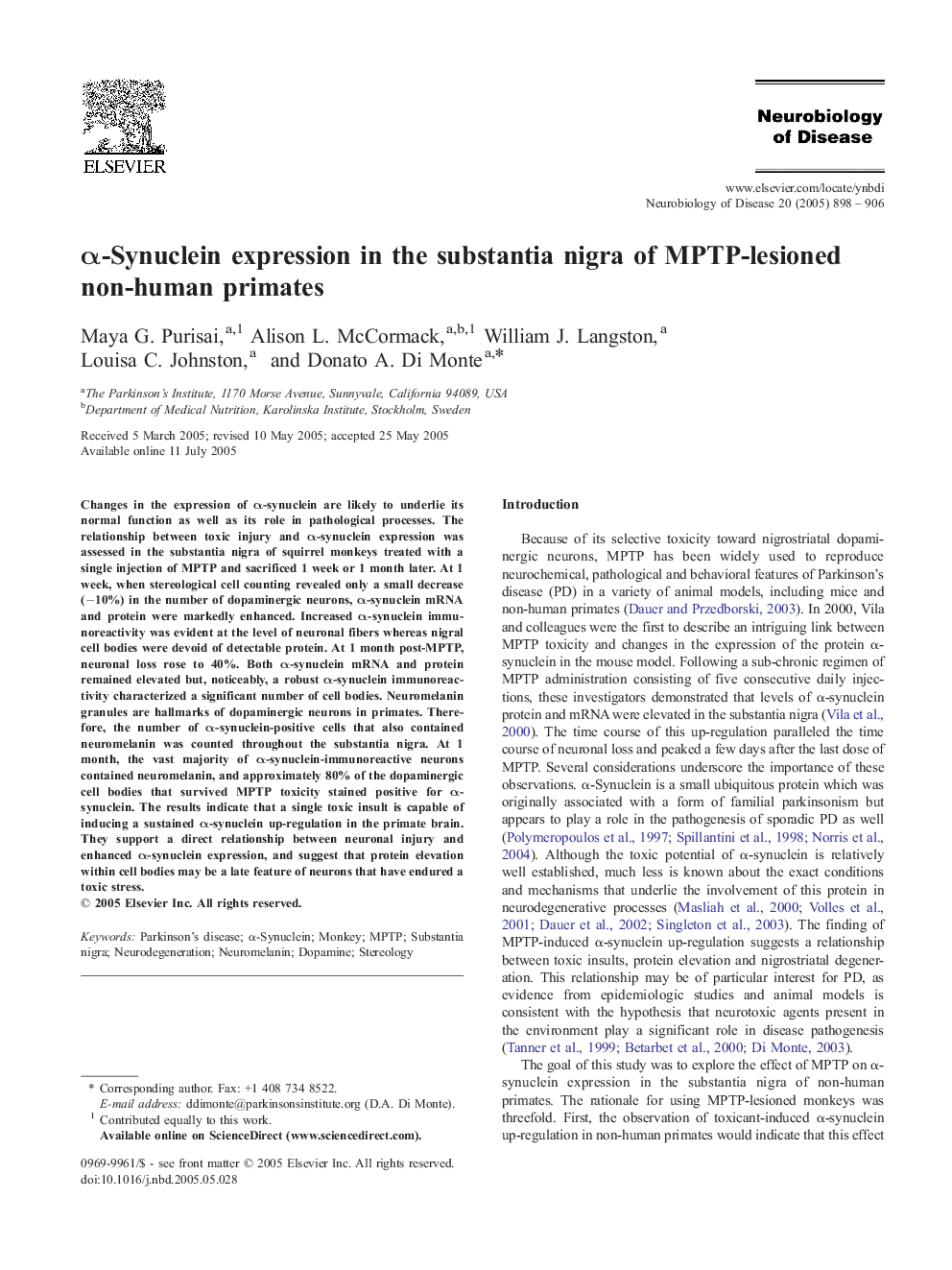| Article ID | Journal | Published Year | Pages | File Type |
|---|---|---|---|---|
| 9989569 | Neurobiology of Disease | 2005 | 9 Pages |
Abstract
Changes in the expression of α-synuclein are likely to underlie its normal function as well as its role in pathological processes. The relationship between toxic injury and α-synuclein expression was assessed in the substantia nigra of squirrel monkeys treated with a single injection of MPTP and sacrificed 1 week or 1 month later. At 1 week, when stereological cell counting revealed only a small decrease (â10%) in the number of dopaminergic neurons, α-synuclein mRNA and protein were markedly enhanced. Increased α-synuclein immunoreactivity was evident at the level of neuronal fibers whereas nigral cell bodies were devoid of detectable protein. At 1 month post-MPTP, neuronal loss rose to 40%. Both α-synuclein mRNA and protein remained elevated but, noticeably, a robust α-synuclein immunoreactivity characterized a significant number of cell bodies. Neuromelanin granules are hallmarks of dopaminergic neurons in primates. Therefore, the number of α-synuclein-positive cells that also contained neuromelanin was counted throughout the substantia nigra. At 1 month, the vast majority of α-synuclein-immunoreactive neurons contained neuromelanin, and approximately 80% of the dopaminergic cell bodies that survived MPTP toxicity stained positive for α-synuclein. The results indicate that a single toxic insult is capable of inducing a sustained α-synuclein up-regulation in the primate brain. They support a direct relationship between neuronal injury and enhanced α-synuclein expression, and suggest that protein elevation within cell bodies may be a late feature of neurons that have endured a toxic stress.
Keywords
Related Topics
Life Sciences
Neuroscience
Neurology
Authors
Maya G. Purisai, Alison L. McCormack, William J. Langston, Louisa C. Johnston, Donato A. Di Monte,
